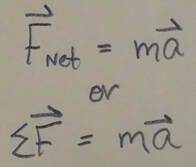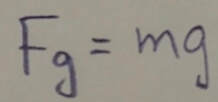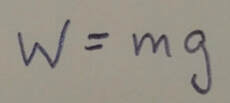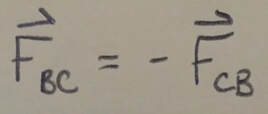Force and Motion I
|
Newtonian Mechanics: The velocity of an object can change (the object can accelerate) when the object is acted on by one or more forces (pushes or pulls) from other objects. Newtonian mechanics relates acceleration and forces.
Force: Forces are vector quantities. Their magnitudes are defined in terms of the acceleration they would give the standard kilogram. A force that accelerates the standard body by exactly 1 m/s^2 is defined to have a magnitude of 1 N. The direction of a force is the direction of the acceleration it causes. Forces are combined according to the rules of vector algebra. The net force on a body is the vector sum of all the forces acting on the body.
Newton's First Law: If there is no net force on a body, the body remains at rest if it is initially at rest or moves in a straight line at constant speed if it is in motion.
Inertial Reference Frames: Reference frames in which Newtonian mechanics hold are called inertial reference frames or inertial frames. Reference frames in which Newtonian mechanics does not hold are called noninertial reference frames or noninertial frames.
Mass: The mass of a body is the characteristics of that body that relates the body's acceleration to the net force causing the acceleration. Masses are scalar quantities.
Newton's Second Law: The net force F(sub)net on a body with mass m is related to the body's acceleration a by:
which may be written in the component versions:
The second law indicates that in SI units:
|
A free-body diagram is a stipped-down diagram in which only one body is considered. That body is represented by either a sketch or a dot. The external forces on the body are drawn, and a coordinate system is superimposed, oriented so as to simplify the solution.
Some Particular Forces: A gravitational force F(sub)g on a body is a pull by another body. In most situations in classical physics, the other body is Earth or some other astronomical body. For Earth, the force is directed down toward the ground, which is assumed to be an inertial frame. With that assumption, the magnitude of F(sub)g is:
where m is the body's mass and g is the magnitude of the free-fall acceleration.
The weight W of a body is the magnitude of the upward force needed to balance the gravitational force of the body. A body's weight is related to the body's mass by: A normal force F(sub)N is the force on a body from a surface against which the body presses. The normal force is always perpendicular to the surface.
A frictional force F(sub)f is the force on a body when the body slides or attempts to slide along a surface. The force is always parallel to the surface and directed so as to oppose the sliding. On a frictionless surface, the frictional force is negligible. When the cord is under tension, each end of the cord pulls on a body. The pull is directed along the cord, away from the point of attachment to the body. For a massless cord (a cord with negligible mass), the pulls at both ends of the cord have the same magnitude T, even if the cord runs around a massless, frictionless pulley (a pulley with negligible mass and negligible friction on its axle to oppose its rotation). Newton's Third Law: If a force F(sub)BC acts on body B due to body C, then there is a force F(sub)CB on body C due to body B:
|
Files:
| APCM Chapter 5 Presentation | |
| File Size: | 3606 kb |
| File Type: | ppt |





